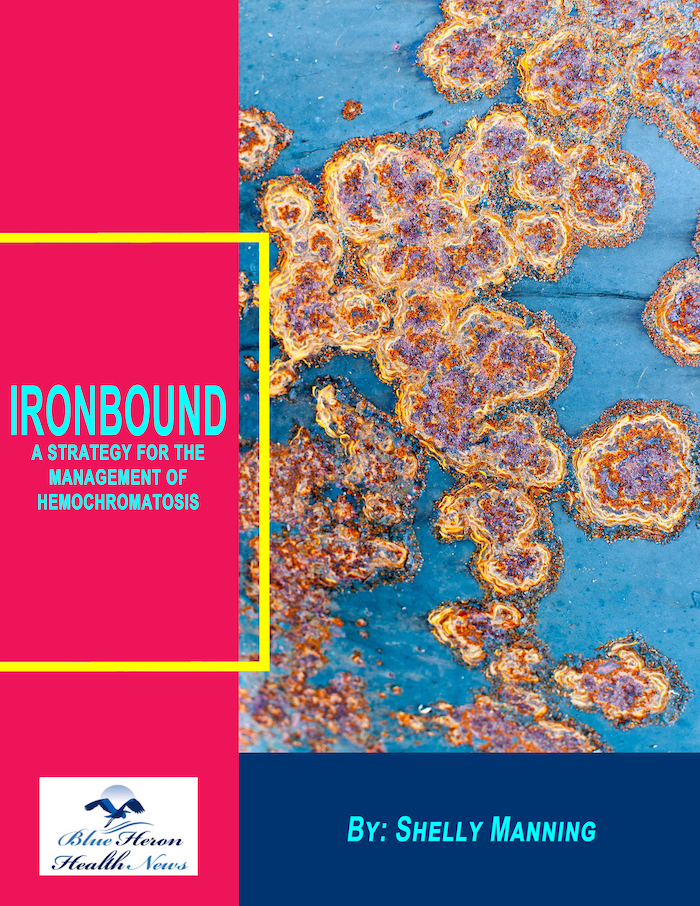
Ironbound™ A Strategy For The Management Of Hemochromatosis by Shelly Manning if you are suffering from the problems caused by the health condition of HCT due to excess amount of iron in your body then instead of using harmful chemical-based drugs and medications you are recommended to follow the program offered in Ironbound Shelly Manning, an eBook. In this eBook, she has discussed 5 superfoods and other methods to help you in reducing the level of iron in your body in a natural manner. Many people are benefited from this program after following it consistently.
How is liver function monitored during chelation therapy?
Liver function is closely monitored with chelation therapy because both iron overload and chelating medications (especially oral medications like deferasirox or deferiprone) can impact the liver. It is monitored to ensure that treatment is not hepatotoxic or causing additional damage to the liver.
???? Key Tests to Monitor Liver Function:
1. Liver Enzymes (LFTs)
ALT (alanine aminotransferase)
AST (aspartate aminotransferase)
Elevated levels can indicate liver cell damage from iron accumulation or drug toxicity.
2. Alkaline Phosphatase (ALP) and Gamma-Glutamyl Transferase (GGT)
Markers for bile duct function and possible cholestasis. May increase in chronic liver disease or due to chelation drug effects.
3. Bilirubin (Total and Direct)
Increased levels may suggest liver dysfunction, bile flow obstruction, or hemolysis.
4. Albumin and Total Protein
Low albumin may indicate chronic liver damage, impaired synthetic function, or malnutrition.
5. Prothrombin Time (PT) / INR
Prolonged PT can be a sign of impaired liver synthetic function in advanced liver disease.
6. Ferritin and Transferrin Saturation
These assess iron stores, but they’re also acute-phase reactants and can rise with liver inflammation—must interpret in context.
7. Imaging (as indicated)
*Liver MRI (T2 or FerriScan)**: Quantifies iron concentration in the liver.
Ultrasound: Finds signs of liver enlargement, fibrosis, or steatosis.
8. Liver Biopsy (rare, but can be considered)
Used if non-invasive testing is unclear or if suspicion of liver disease outside of iron overload.
???? Monitoring Frequency
Baseline: All liver function tests before starting chelation.
Every 2–4 weeks initially, then every 1–3 months depending on drug and patient stability.
More frequent monitoring if abnormal LFTs, underlying liver disease, or symptoms.
???? When to Reassess or Adjust Therapy
Persistent or marked ALT/AST elevations
Jaundice or liver tenderness ????
Rising fatigue, nausea, or right upper quadrant pain
Ferritin dropping rapidly or below target levels
Summary:
Liver function during chelation therapy is monitored with frequent blood work (LFTs, ferritin, INR) and less frequently imaging or biopsy. This permits both iron-related injury and chelation toxicity to be recognized early, with treatment safely adjusted.
Would you like to view a sample lab schedule or monitoring checklist for a specific chelating agent?
Chelation therapy can interact with some drugs, supplements, and medical treatments. These interactions can reduce drug effectiveness, increase toxicity, or cause serious side effects, and thus health care professionals should closely monitor patients.
What follows is a summary of potential drug interactions with chelation therapy, classified by category:
???? 1. Mineral and Vitamin Supplements
Iron, Zinc, Magnesium, and Calcium
Chelating agents (e.g., EDTA, DMSA, DMPS) can bind these minerals that are essential, rendering them less available for use in the body.
???? Effect: Deficiency of nutrients with long-term therapy.
???? Recommendation: Separate supplements 4–6 hours from chelation dosing or mineral repletion under supervision.
Multivitamins
May hamper the absorption or activity of chelating agents.
???? Recommendation: Take at a different time of day.
???? 2. Antibiotics
Tetracyclines and Quinolones (e.g., ciprofloxacin)
Chelating agents may bind with these antibiotics within the gut, reducing absorption and activity.
???? Effect: Decreased antibiotic effectiveness.
???? Recommendation: Dose separately by at least 4 hours.
???? 3. Thyroid Medications
Levothyroxine
Similar to calcium or iron, levothyroxine may bind with chelating agents and be less absorbed.
???? Effect: Risk of hypothyroidism from reduced medication effectiveness.
???? Recommendation: Take thyroid meds at least 4 hours away from chelators.
???? 4. Anticoagulants (Blood Thinners)
Warfarin (Coumadin)
Some chelating agents can affect liver metabolism or bind with vitamin K, modifying warfarin activity.
???? Effect: Risk of bleeding or clotting is increased.
???? Recommendation: Monitor INR regularly during treatment.
???? 5. Cardiac Medications
Digoxin
Electrolyte disturbances due to chelation (especially loss of calcium or magnesium) can alter digoxin effect.
???? Effect: Risk of digoxin toxicity or reduced effectiveness.
???? Recommendation: Monitor electrolyte and digoxin levels.
???? 6. Immunosuppressants or Cytotoxic Drugs
Chelation therapy can alter the metabolism or increase the clearance of some immunosuppressive drugs.
???? Effect: Can reduce effectiveness or increase toxicity, depending on the drug.
???? Recommendation: Close monitoring is necessary.
???? 7. Insulin and Diabetes Medications
Chelation can affect the management of blood sugar, especially if renal function is altered.
???? Effect: Risk of hypoglycemia or hyperglycemia.
???? Recommendation: More frequent blood glucose monitoring.
⚠️ General Guidelines to Avoid Interactions:
Always give your practitioner a full list of drugs and supplements before you start chelation therapy.
Separate oral medications and chelating agents by some hours to prevent gut binding.
Monitor electrolytes, kidney function, and drug levels regularly as needed.
Supplementation of minerals under medical supervision may be considered during prolonged therapy.
Would you like a printable chart with safe spacing and timing for popular drugs with chelation therapy?
Ironbound™ A Strategy For The Management Of Hemochromatosis by Shelly Manning if you are suffering from the problems caused by the health condition of HCT due to excess amount of iron in your body then instead of using harmful chemical-based drugs and medications you are recommended to follow the program offered in Ironbound Shelly Manning, an eBook. In this eBook, she has discussed 5 superfoods and other methods to help you in reducing the level of iron in your body in a natural manner. Many people are benefited from this program after following it consistently